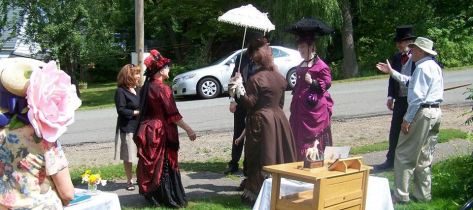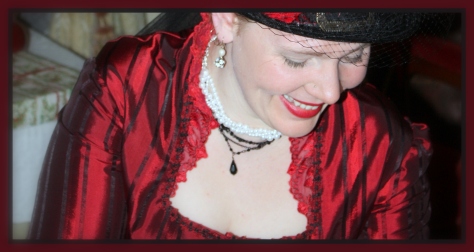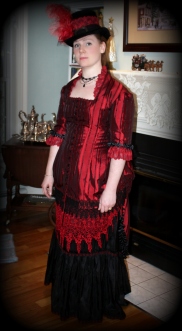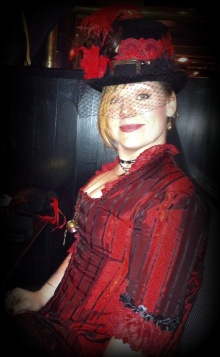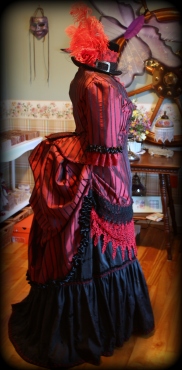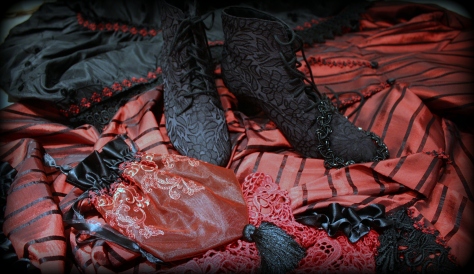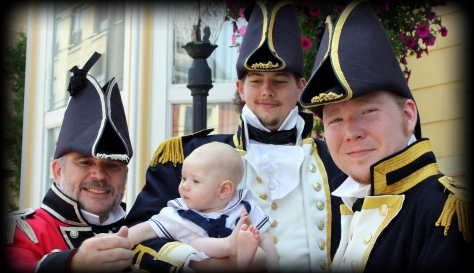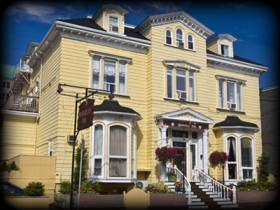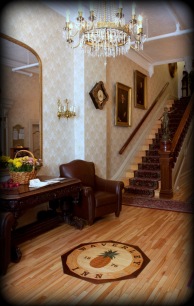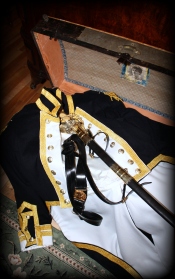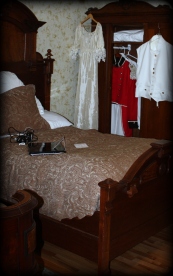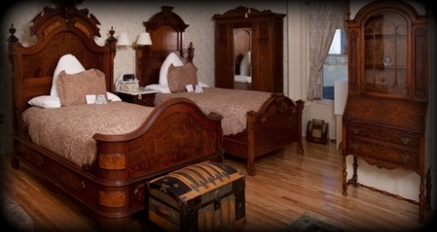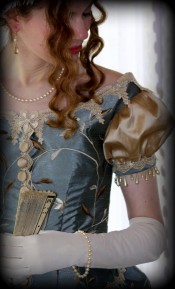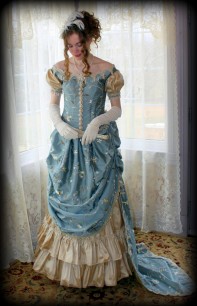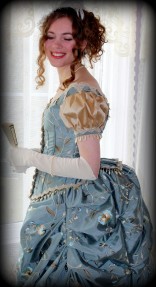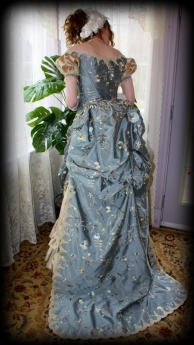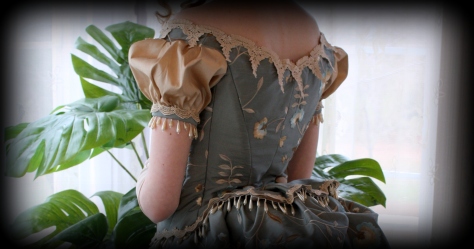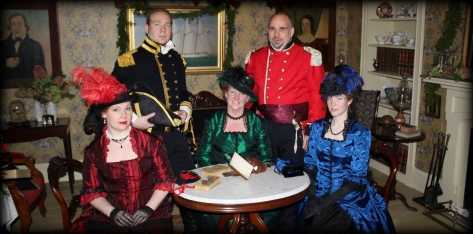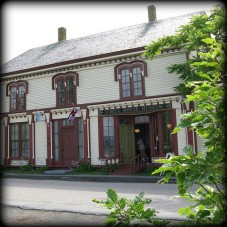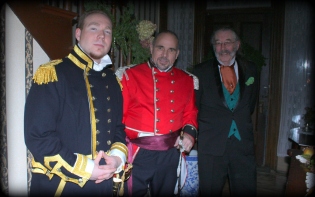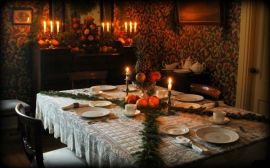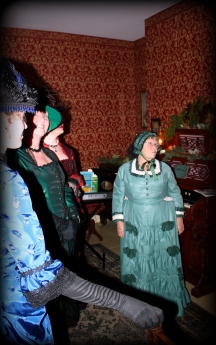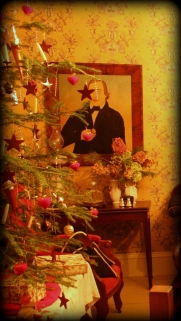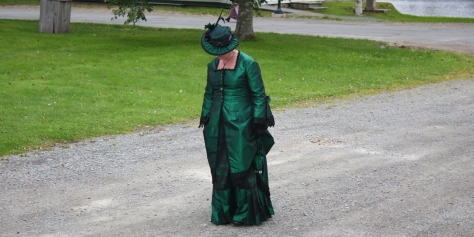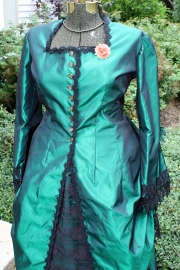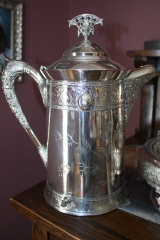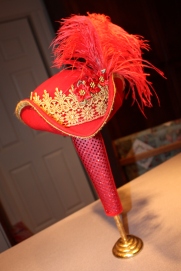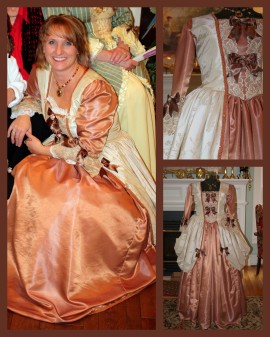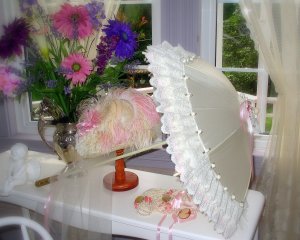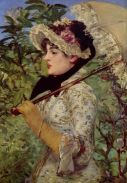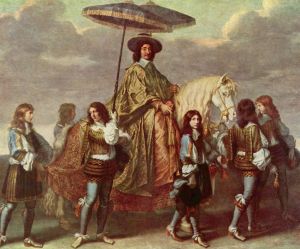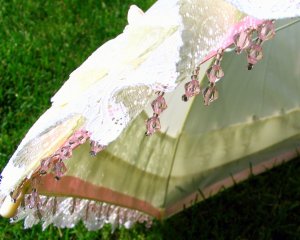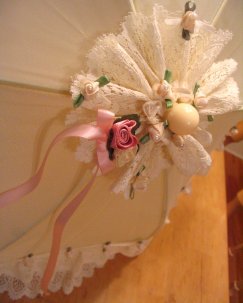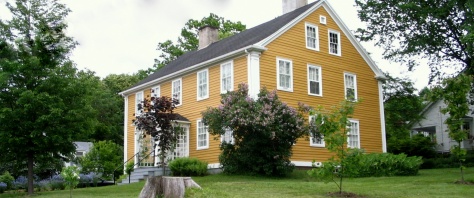 Recently, Man The Capstan attended a Victorian garden social event at the Randall House Museum in Wolfville, Nova Scotia. This was held in conjunction with their summer exhibit called “Dear Dottie”. Costumes were encouraged by the museum, and this happily offered us an opportunity to get into our Victorian duds and do some strollin’. It was a particularly special event for us because a number of the members of the Man Capstan Crew are descended from Dottie and her family.
Recently, Man The Capstan attended a Victorian garden social event at the Randall House Museum in Wolfville, Nova Scotia. This was held in conjunction with their summer exhibit called “Dear Dottie”. Costumes were encouraged by the museum, and this happily offered us an opportunity to get into our Victorian duds and do some strollin’. It was a particularly special event for us because a number of the members of the Man Capstan Crew are descended from Dottie and her family.
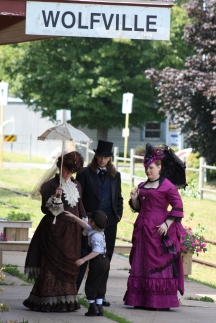 In 2005 a collection of approximately 500 letters addressed to Dottie Stewart, were discovered in an old trunk in the attic of a Heritage home that had once belonged to the Stewart family of Grand Pre, Nova Scotia. The sheer amount of these letters reveal a wonderfully detailed picture of what life was like for the Stewart family, their friends and their relatives, in this rural farming community during the late 1800s. Spanning a period of almost 15 years of Dottie’s life prior to her marriage, they are indeed a special find, not only for her descendants, but for the entire community.
In 2005 a collection of approximately 500 letters addressed to Dottie Stewart, were discovered in an old trunk in the attic of a Heritage home that had once belonged to the Stewart family of Grand Pre, Nova Scotia. The sheer amount of these letters reveal a wonderfully detailed picture of what life was like for the Stewart family, their friends and their relatives, in this rural farming community during the late 1800s. Spanning a period of almost 15 years of Dottie’s life prior to her marriage, they are indeed a special find, not only for her descendants, but for the entire community.
The Stewarts were predominantly farmers and orchardists, a fact that is often mentioned in the letters sent to Dottie. Among other things, they grew and harvested apples, as did many farmers living in the Annapolis Valley during that time period, and, as many still do to this day. The ancestors and descendants of this family farmed the same lands for a period of almost 250 years, and even today members of the family can be found in the area.
The letters have been transcribed by volunteers from the Wolfville Historical Society, and were used as a primary source for “Dear Dottie”. This exhibit focuses not only on the Dottie letters and her family, but also on the history and goings’ on of the community during that time. It sheds light upon their joys and sorrows, their struggles, hardships and good times. It also divulges some of the very personal experiences of those who corresponded with Dottie. You can view this exhibit until the 15th of September, at which time the Randall House Museum closes down for the season.
Recently the Dottie Letters have also been used as a resource for seven short educational videos called Discovering Voices, by the NS Dept of Education. Some of these episodes were filmed at the Randall House.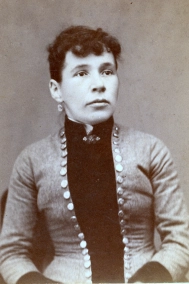
The Randall House is a lovely old house and well worth a visit if you are in town. It is owned and operated by the Wolfville Historical Society and curated and managed by Alexandra Hernould. The following is a brief history of the house that I have taken from the
Wolfville Historical Society Website.
“This property, like all the other land in Horton Township, was granted to the New England settlers known as Planters, who arrived from Connecticut in the 1760s after the expulsion of the Acadians. A house on the property is mentioned in the deeds as early as 1769 but it is likely that the large and imposing eight room residence with full attic and cellar was built at least a generation later by more established settlers. Aaron Cleveland, a cooper, lived here with his family from 1809 to 1812, during which time he took out a large mortgage, and it is possible that he was the builder. The house, which overlooked the harbour, the wharves and the bustling commercial centre of Upper Horton or Mud Creek, was strategically situated to be at the hub of village life.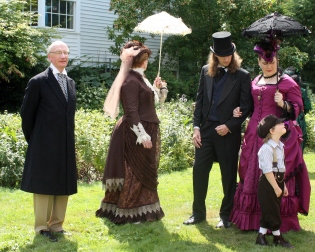
The term “the Randall House” was first used in 1812 when Charles Randall, carpenter, coachmaker and member of another Connecticut Planter family, purchased it from Cleveland. His wife Sarah Denison died shortly after the birth of their only child, Charles Denison Randall, and for a time father and son lived here alone. They later moved to a smaller house on the property and rented the Randall House. Among their tenants was the Rev. John Pryor, principal of Horton Academy and one of the founders of Acadia University, who is described as “a cultivated, courtly man”. He and his family lived in the house and may also have used it as temporary classroom space for the Academy. From 1835 to 1845 Mrs. Henry Best, widow of a Halifax naval officer, operated a seminary for young ladies in the building.
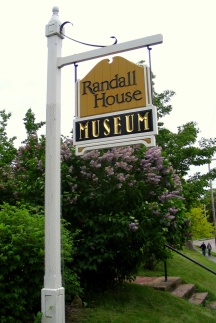 Charles D. Randall bought the house from his father in 1844, and moved there following his marriage to Nancy Bill, the daughter of a prosperous farmer and member of the Legislative Assembly. Members of the Randall family continued to live in the family home until 1927 when Eardley and Anna left the Randall House for the last time. Eardley’s initials can still be seen carved into the wall of the attic staircase.
Charles D. Randall bought the house from his father in 1844, and moved there following his marriage to Nancy Bill, the daughter of a prosperous farmer and member of the Legislative Assembly. Members of the Randall family continued to live in the family home until 1927 when Eardley and Anna left the Randall House for the last time. Eardley’s initials can still be seen carved into the wall of the attic staircase.
The Charles Patriquin family purchased the house in 1927, restored it and installed its first bathroom. The Patriquins are still remembered for their warm-hearted interest in young people: there was a dress-up box for local children from which they could create Hallowe’en costumes, while Charles taught them how to care for wounded birds and animals. He also looked after the ducks who spent the summer in the Duck Pond (the old harbour) and grew a productive garden nearby. It was the Patriquins who expressed the wish that the house should remain unchanged in the community as a reminder of past times.
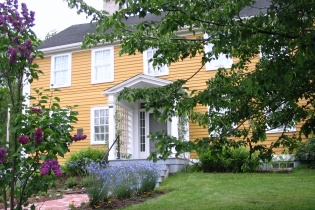 Photographs of the Society’s original museum, the T.A.S. DeWolf house, now hang in the front hall with a framed square of the pictorial wallpaper-all that remains of Prince Edward’s gift. The Randall House is arranged and furnished as an early Wolfville residence and most of the furniture and artifacts have been donated by local people. A temporary exhibit room in the back parlour features changing displays which relate to the town and surrounding communities.”
Photographs of the Society’s original museum, the T.A.S. DeWolf house, now hang in the front hall with a framed square of the pictorial wallpaper-all that remains of Prince Edward’s gift. The Randall House is arranged and furnished as an early Wolfville residence and most of the furniture and artifacts have been donated by local people. A temporary exhibit room in the back parlour features changing displays which relate to the town and surrounding communities.”
The Wolfville Historical Society is always looking for new members and volunteers.
Don’t forget to click on the pictures to see their full sizes.